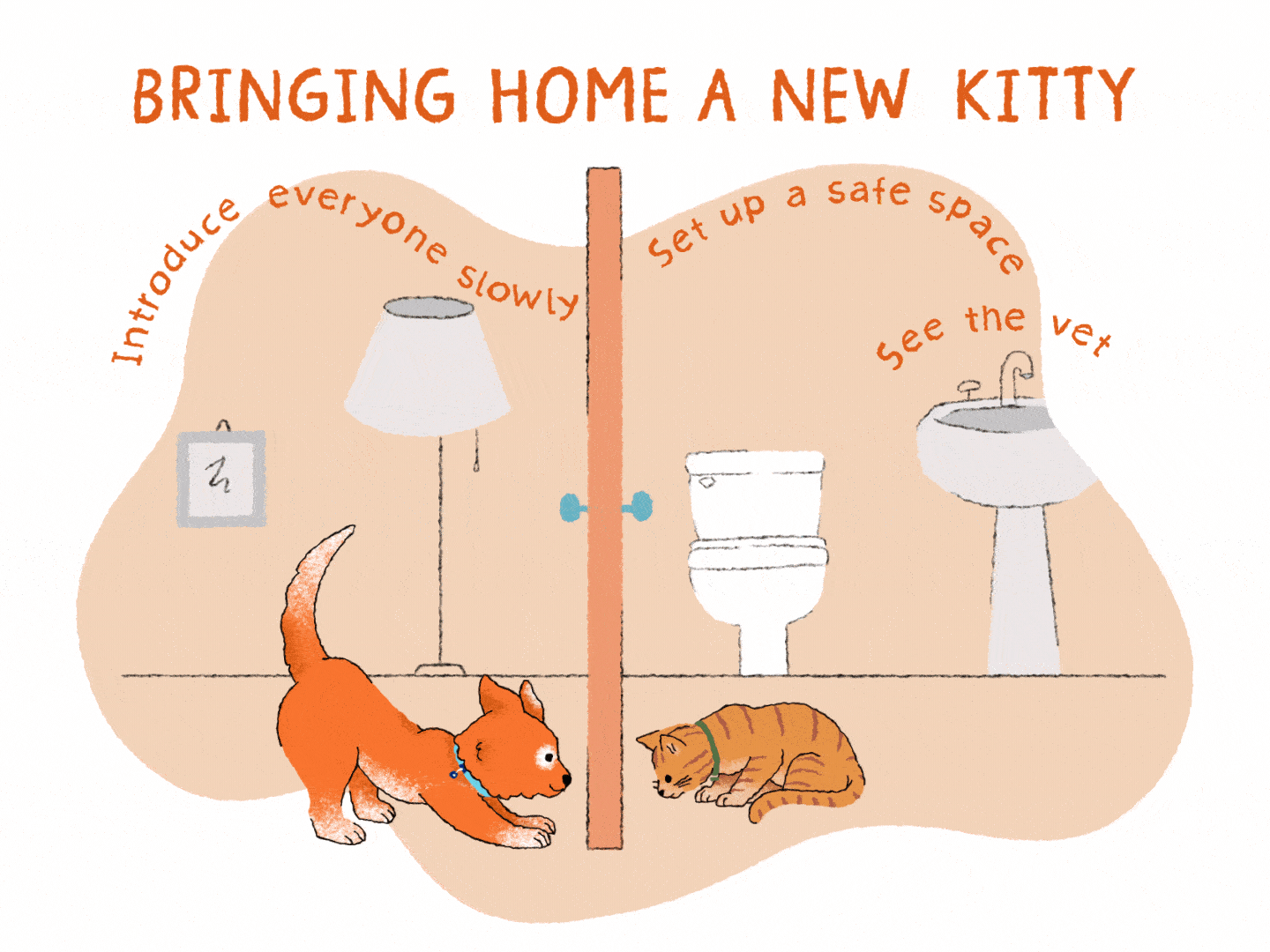your checklist for bringing a kitten home
Help your new cat feel comfortable in their new home
Congratulations! Kittens and cats make wonderful friends. Your kitty’s first few days in their new home are going to be an adventure. We’ve got quick and easy tips on how to make the transition as smooth as possible.

Tips on setting up your kitten for success
How to help your kitten learn their new home with a safe zone
Cats are often freaked out by new environments. Here are some ways you can help them ease into their new home.
- Pick a small room or portioned-off area in your house to be your cat’s “safe zone.” You want a place where the kitten will both feel safe and actually be physically safe if you’re out of the house or sleeping.
- Shy kitties may also want a place to hide while they get used to all the newness around them. It doesn’t have to be fancy. A box with a cat-sized hole cut in the front and back works just fine.
- Stock the safe zone with food, water, and a litter box. Litter should be placed a respectable distance from their food so they don’t get the sense they’re eating where they poop, or vice versa.
- Make sure your cat has a soft, high-sided bed (or a rolled-up towel in a box), where they can safely sleep. Don’t be surprised if they sleep a lot — kittens can sleep up to 20 hours a day.
- Give your cat some cat-safe toys in their zone for pouncing on or batting around.
- Only interact with your kitty in their safe zone at first. As they get more comfortable, you can start opening up other areas in the house once they’ve been cat-proofed. See more on cat-proofing your house
- Try to stay home for the first few days so you can see how your kittyBAE is doing. Make sure they’re eating, drinking, and pooping. See if they’re scratchers who might want a scratching post, or adventurous climbers who need extra cat-proofing to keep them (and your possessions) safe.
- Don’t force yourself on your kitty if they’re shy at first. Be patient, and have treats and distance toys, like cat wands, ready for when they come out.
- For indoor/outdoor cats, don’t let kittens out of the house until they’re at least 6 months old. For older cats new to your home, don’t let them out of the house until you’re sure they can orient themselves properly. See more about indoor and outdoor cats
How to introduce new cats to cats already in your home
You want to hold off on introducing cats to each other for at least a few days. Cats can take anywhere from a few hours to actual months to learn to like each other, so be patient and take it slow.
- Physically separate the new cat’s safe zone with a barrier, like a door. Let the cats sniff at each other underneath the door to learn each other’s kitty smells.
- Feed each cat near their side of the door, so the other cat’s smell is associated with good things.
- Swap cats — let your new cat out of their safe zone to sniff the rest of the house, while your other cat gets to sniff out the new kitty’s safe zone.
- Make sure to supervise their first real interaction. It’s OK if either or both of them hiss or growl a bit as long as they’re not actually fighting. Praise them both and give them treats.
How to introduce your kitten to your dog
Much like introducing different cats, you really want to take a puppy-and-kitty greeting slow. An over-enthusiastic dog can scare or even hurt a cat, even if all they want is to say hi.
- Ideally, your dog will already obey commands like “sit,” “stay,” or “leave it.” This can make it much easier to moderate their enthusiasm when they meet their new friend.
- Like with cats, separate your kitty and your dog for the first few days, keeping your kitten in their “safe zone” while the dog gets used to their kitty smells underneath the door.
- Once your dog is ready, allow them to see your kitty through a baby gate or other barrier. Watch both your cat and your dog to see how they feel about this. If your cat is uncomfortable, keep the barrier up until you feel it’s time for a real meet and greet.
- Keep your dog on a leash the first time your pets meet face to face. Make sure your kitty isn’t on your lap or restrained in any way. You want your cat to have an easy exit available, since they will want to bolt if scared.
- It may take time, but most cats and dogs find a way to endure living together — and even enjoy it.

How Banfield can help
We’re rooting for your new kittyBAE! Please reach out to your veterinary team if we can support you with any concerns, health issues, or information to help keep your kitty healthy and happy.
 Mites and mange
Mites and mange Podcast - Not Just Fluff
Podcast - Not Just Fluff
